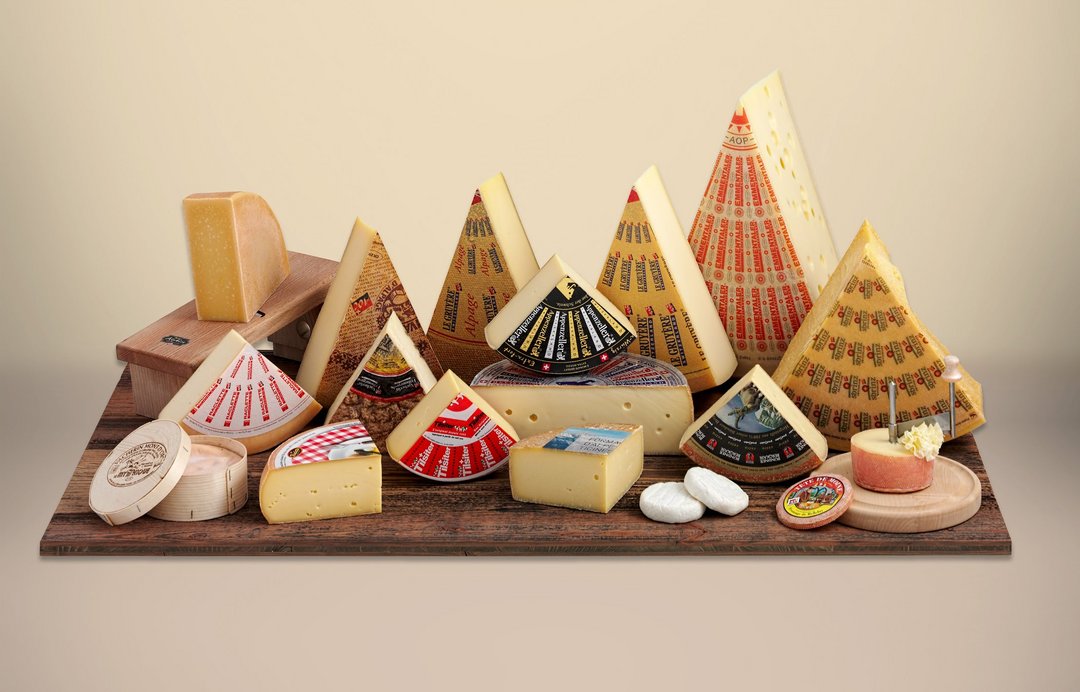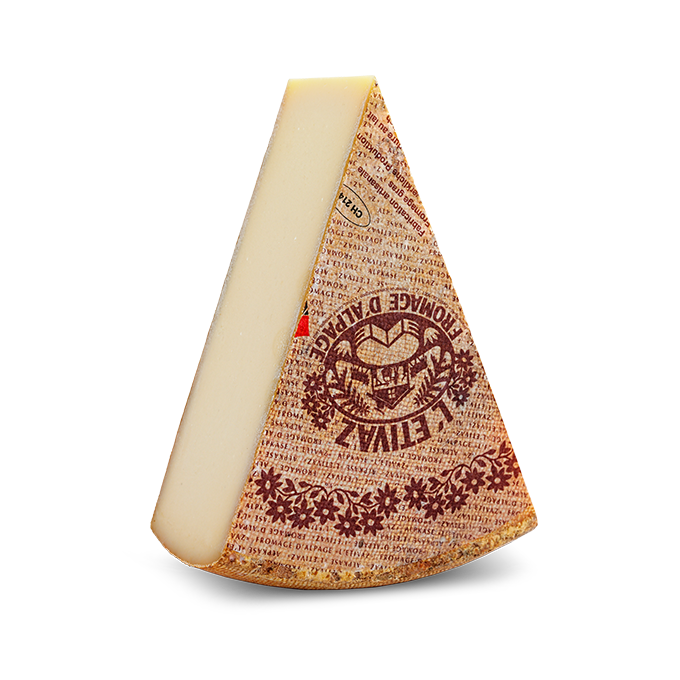Swiss cheese is categorised into different types of cheese: we differentiate between extra-hard cheese, hard cheese, semi-hard cheese, soft cheese, cream cheese, as well as cheese spread and melted cheese. Each type of cheese has its own characteristics and differs in terms of its fat and water content, as well as the production methods, maturation and storage. As diverse as the regions in Switzerland!
- Extra-hard cheese
- Hard cheese
- Semi-hard cheese
- Soft cheese
- Cream cheese
- Spreading and melting cheese

Extra-hard cheese
Sbrinz AOP is a typical extra-hard cheese. Extra-hard cheeses are made from natural raw milk. They are full-fat cheeses containing 45% fat in dry matter and have a very low water content. This makes them suitable for a lengthy maturation period. Sbrinz AOP and Alpkäse/Hobelkäse are ready to eat after around 18 months and fully matured after 2 to 3 years.
Extra-hard cheeses

Hard cheese
Hard cheeses can be used for a great many cold and warm dishes: Whether sliced, planed or grated; in fondue or baked; used in a gratin as an aperitif or as a dessert – they always taste delicious. When wrapped up properly and stored in a cool place, Emmentaler AOP and Gruyère AOP can keep for a good two weeks; Sbrinz AOP can last for up to four weeks.
Hard cheeses

Semi-hard cheese
Typical examples of semi-hard cheeses include Raclette Suisse®, Raclette du Valais AOP, Appenzeller®, Tilsiter, Tête de Moine AOP, Vacherin Fribourgeois AOP, Bündner Bergkäse and Mutschli. They are made from either pasteurised milk or raw milk and mature for 3 to 6 months.
Semi-hard cheeses are highly valued in cold and warm dishes, and some specialities are ideal for use in fondue (Vacherin Fribourgeois AOP) or raclette. Other varieties stand out due to their particular shapes or the way they are sliced (e.g. rosettes with Tête de Moine AOP). When wrapped up properly and stored in a cool place, they last for around two weeks.
Semi-hard cheeses

Soft cheese
Soft cheeses are generally made using pasteurised milk. With a water content of around 50%, they have a very short maturation period of just a few weeks. There are generally considered to be two different types of soft cheese.
Soft cheese with mould ripening (white-mould cheese):
Typical examples include Tomme Vaudoise and Swiss brie. The white rinds are generally eaten.
Smeared soft cheese:
During their maturation period, these soft cheeses are washed or smeared with brine, which lends them their brown rind. Vacherin Mont-d'Or AOP is an example of this type of cheese.
Soft cheeses can be used in both cold and warm dishes. They are also ideal as dessert cheeses. When wrapped up properly and stored in a cool place, they last for at least one week.
Soft cheeses

Cream cheese
Cream cheeses are rindless, non-matured cheeses, which are ready to eat immediately after production. They are made using pasteurised milk and have various fat contents. The most well-known varieties include quark, cottage cheese, formaggini, mozzarella, Petit Suisse and specialities like cream cheese and double-cream cheese.
The use-by-date for cream cheeses is stated on the packet. It is important to ensure that they are kept cool throughout transportation, especially during the summer months. Cream cheese products should be stored in their original packaging or in a sealed plastic container at max. 5°C. Cream cheeses can be used in cold and warm dishes, for example for fillings, dips, sauces or in oven-baked dishes.

Spreading and melting cheese
The first perfected procedure for melting cheese was invented in 1913 by Walter Gerber and Fritz Stettler in Thun, after food chemist Prof. Robert Burri had discovered the effects of the emulsifying salt sodium citrate in 1912. Melting cheese is produced differently to hard, semi-hard and soft cheese. Melting cheese generally has a fat content of 30% to 45% FDM. The addition of emulsifying salts turns the protein into its soluble form. We differentiate between blocks of melting cheese (solid consistency, high acidity, low water content) and melting cheese spreads (soft consistency, low acidity, high water content).














